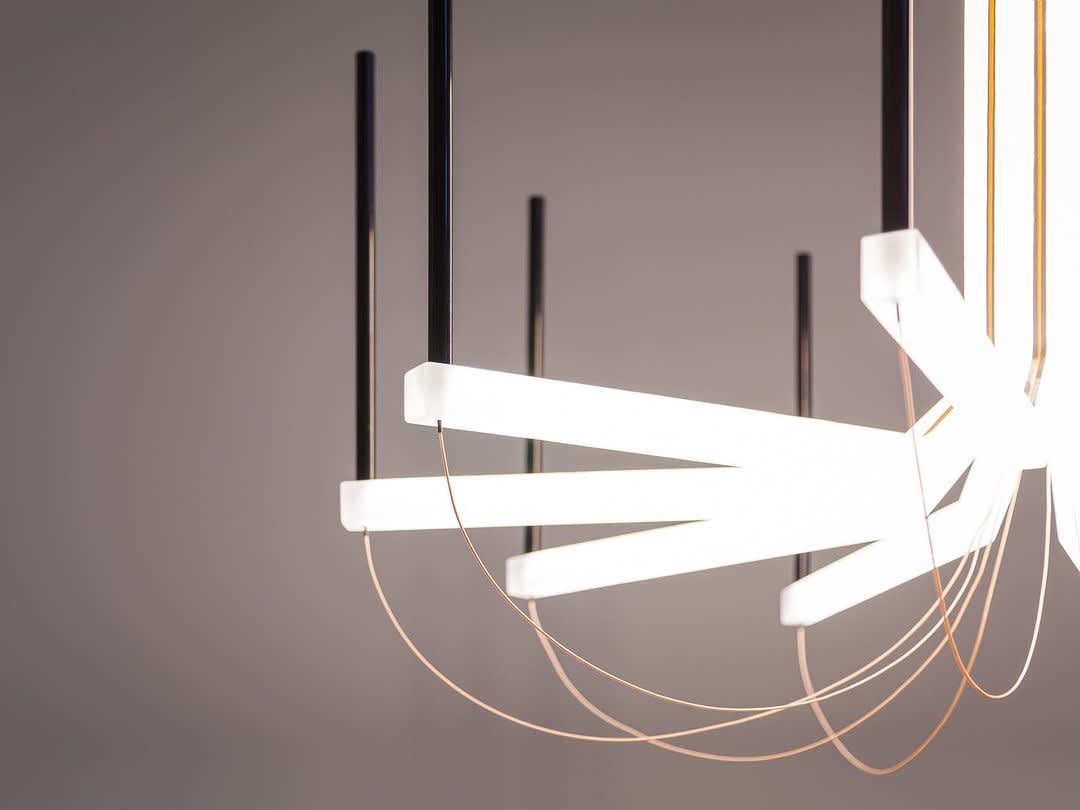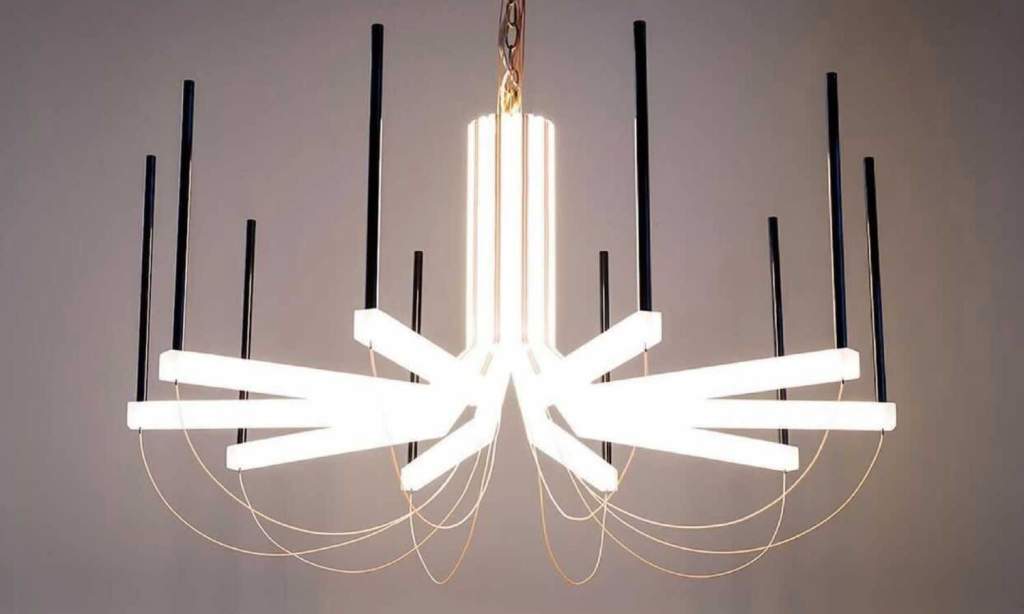Apparently, our light shades want what’s best for us; a moment without looking at our phone screens.
This new Brooklyn-designed chandelier, named Dis/Connect, blocks wireless signals directly below it, creating a space of digital quiet.
Many of us look at a screen all day without thinking about it. In today’s vastly digital workspace, we’re required to be looking at our computers, our tablets or our phones at almost every moment of the working day. Even meetings that were previously face-to-face, are often being conducted via online platforms.
Looking at our screens this much can cause damage to our mental, physical and emotional health for a plethora of reasons.
The Dis/Connect chandelier, creates a space in the home, the office or in public of mutual disconnection. The light features ten radio-jamming antennae where the candles of a traditional chandelier would sit. These antennas interfere with the wireless communication of devices within a five-foot radius directly below the chandelier, so people are unable to go on the internet, message or make calls.

Forman created Dis/Connect in collaboration with artist Ben Luzzatto and engineer Daniel Gross to help people get off their phones.
“To be wholly present with ourselves and each other, we must design new tools to create spaces of digital quiet in our homes,” Forman told Dezeen.
“It’s not that we can’t turn our phones off, it’s that we don’t – they are too addictive,” he said.
He’s not the first designer inspired by the unavoidably addictive tendencies of social media. Design student Minwook Paeng designed a “Third Eye”, to help us stay out of harm’s way while we’re not looking where we’re going because we’re glued to our devices. His design, although functional, was also commentary on our evolving behaviour towards technology and how ingrained it is in our nature.
Forman, Luzzatto and Gross’s Dis/Connect chandelier is an art piece rather than a commercial product, as signal hamming is actually illegal in most countries, including big contenders the US and UK.
Despite this, the designers believe that this kind of technology should be made available in both public and private spaces. They’re currently planning a campaign to go alongside the artwork.
Read more stories from The Latch and subscribe to our email newsletter.







